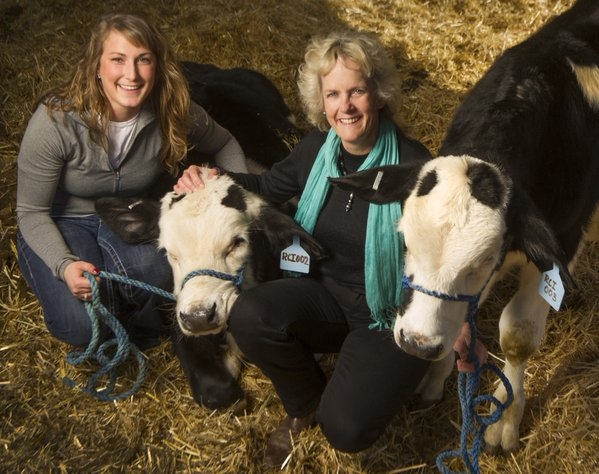
Dairy cows have been bred for optimal dairy production, but the gene mix brought along horns. Angus beef were bred for optimal beef production, and don't have horns. Since the dairy industry doesn't want animals with horns because they can hurt each other or farmworkers, it is common practice to remove them shortly after birth.
Removing the horns involves an uncomfortable procedure called debudding, in which, after being treated with a local anesthetic, the cells on the animal's head that would grow into horns are killed with an electrical appliance.
"Consumers are concerned about how we care for dairy animals. They expect us to do a good job and are concerned about pain and discomfort," said UC Davis veterinarian Terry Lehenbauer in a video about the advancement (See the video below).
Using precision genetic "editing," scientists were able to delete the dairy cow gene that produced horns and replace it with the angus gene that resulted in hornlessness.
At UC Davis, the two calves' growth and development will be tracked. Eventually they will father cows with horned mothers to see if the hornless trait is passed on to the offspring. The odds of them doing so, Van Eenennaam said, are 100 percent, if "Mendelian genetics hold true." Mendelian genetics are laws of gene inheritance discovered by 19th century monk Johann Mendel.
Van Eenennaam said it's not clear whether other, unexpected effects of the gene editing will occur. However, if successful, gene editing will allow the dairy industry to bypass decades of breeding for hornless cows.